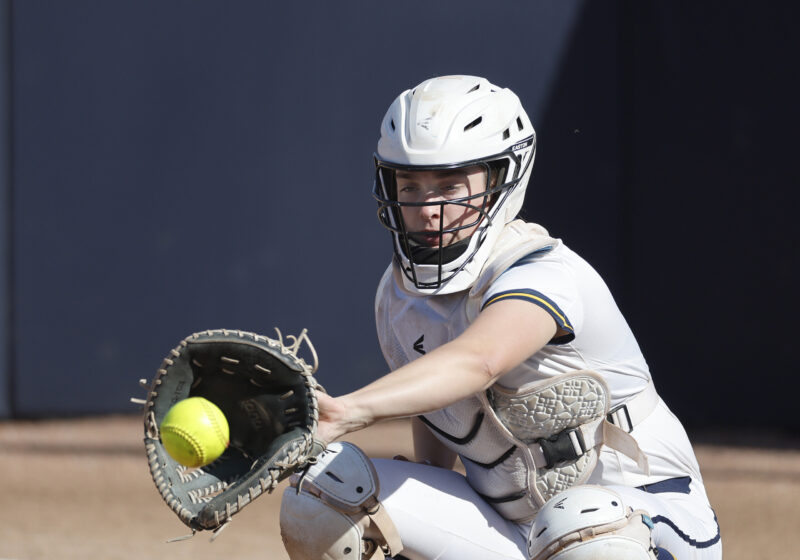University Registrar Nancy Speck has been monitoring and updating the class registration process for nearly 10 years.
The Registrar has just launched a new course description Web page. Speck has also been a part of initiatives to update Blackboard and UR Access Plus with newer technology and Web design.
What exactly does the Registrar do?
The Registrar’s office is responsible for maintaining the integrity of the academic record. Whether its grading or courses or anything related to the administrative process in managing a college or a university. We produce transcripts and we certify students for graduation. So all of the administrative, back-office kind of activity and we administer grading and all that sort of thing.
What’s your experience as a Registrar?
It will be 10 years this coming spring. Before I was a registrar here, I was a Registrar at Onondaga Community College in Syracuse, N.Y. Before that I was a records manager at Syracuse University. I’ve actually been in the Registrar’s profession since 1986. People either love it or hate it. There’s not a lot of middle ground. It’s a lot of numbers, a lot of crunching, lot of technology.
The new course description Web site, is that from your office?
Yes. It’s part of an effort to modernize some fairly old technology and some fairly old functionality. We have had four projects under motion for the last two years, some of which is transparent to the user.
One of the things we did was rearchitect the technology underneath Web registration which is a combination of main frame, middle ware and Web front end. It’s been in existence since November of 2003. In the last year we rearchitected what was under that to make that process smoother and quicker.
We started to redesign student access. UR Access Plus has now moved into the Blackboard portal so there’s a tab across the top. It replicates what you used to see in Access but you can get there with your Net ID and password, instead of your university ID and pin. There are three parts to access, one is student access which we have already done. We’re now working on instructor access and advisor access. Those are for faculty and staff who will advise students and teach, so that instructors will be able to grade more easily and do online grading more simply. And advisors will be able to see student records more easily, again using the net ID and password instead of the university ID and pin.
The Course description Web site was the one that we completed second after the Web architecture and modernization. There are still some things that we’d like to do with it that will be helpful for departments. They’d like to be able to link to individual course descriptions from the new Web site. What it does is that it combines the actual schedule with the description. That was the thing that we were aiming for. We were trying to get away from this separate, here’s the list of descriptions and here is the schedule and so you are flipping back in this paper document.
We were trying to establish a way for students to see both at the same time and to provide a little bit of a search opportunity on the left. So if you picked a word, like sustainability, all of the courses that have the word sustainability in the course description will pop up so you can kind of see what’s out there. There’s more work to be done but I think it’s a solid beginning effort. So far, the feedback that I have been hearing from people is that they like it.
I’d be interested to know whether students think that the paper version could ever go away. I keep decreasing the number that I print every year but some people think I would really like to have this thing in my hands for a while and then I can go use the technology. So I continue to produce the print document, but fewer and fewer as time goes on.
In terms of Web registration, sometimes in the past it has been slow with everybody registering at the same time. Have there been efforts to speed it up?
Well, the goal for this new architecture, the thing that you don’t see underneath, the multiple instance registration running at the same time, is an effort to improve that performance.
I know that last spring’s performance was immeasurably improved from previous years. I would expect nothing less this registration. I always hope for a registration that is uneventful and I don’t hear about it, because if I don’t hear about it then it must have worked pretty well.
We had a registration for freshman a couple years ago, and it wasn’t the registration system, but the power source over at the medical center went down right in the middle and there was nothing we could do about that.
You sit on a round table called CTLTR. Could you tell us a little about what that is?
It’s the College Teaching and Learning Technology Roundtable. It’s a combination of faculty staff and students who have an interest in technology in context of education. And we also provide, because of the college’s support for the program, a number of grants to faculty to improve their courses. Over the course of a year we’ll get over 8-10 applications from faculty for small grants we call them technology initative grants that help them enhance their coursework and their course materials.
This has been in existence for a long time. Initially it was just to bring technology to the class room; now all the registrar classrooms have a basic set of technology. But we will look at other classrooms that need to be enhanced from a physical perspective as well.
So what would be an example of a grant that a professor may apply for?
Most recently was between Greta Niu in English and Ted Pawlicki in Computer Science and it was the development of the new robotics class that they wanted to teach. We look at a lot of collaborative opportunities, enhancements of web sites, enhance of instructional materials. So all divisions, and we don’t have a big pot of money, but small pots of money that get people started.
Do you have any other new initiatives in the pipeline?
Obviously we want to continue to enhance the online services. As I said, we are kind of a back office operation. Registrars are successful when they are invisible, when you do see what you have to do to do what we do.
I’m hoping to do a couple of things. I want to finish the instructor and adviser access piece because that’s important for advising and grading.
We’re working on an online major declaration form so the blue forms will go away. Students will be able to fill out the major declaration form online.
I’m very interested in getting this major declaration form rolled out for students because I think that it will enhance the experience that the student has in communicating with faculty as the major is declared. And the nice thing about it is that you will be able to make changes without submitting a paper document. And you can keep track of the changes that you have done.
Suppose you have declare chemistry, but you decide you want to do biology. You can do an ‘if then [scenario],” and look if you change from chemistry and biology, what classes do I take with me, what can I make work and what do I have left to do. You can see what you have completed, what’s in progress, and what needs to be finished. The goal is to have students play in that environment so they can use the ‘if then [scenario].”
I think it will enhance the student experience in figuring out exactly what it is that they want to do and keeping track of the process.
What’s your time table for that new online program?
I’m hoping to roll it out in the spring for the class of 2012. Anybody in 2011 or 2012 are still in the paper file format. I’m hopeful that we can roll it out for the class of 2012. Students in the class of 2012 who have already declared and have done it on paper are
in on paper. There will be a point when we say that ‘Ok Everybody,” it’s time now to do it online and I can’t say exactly when that will be, but hopefully in the spring.
Clark is a member of the class of 2012.
Willis is a member of the class of 2011.

